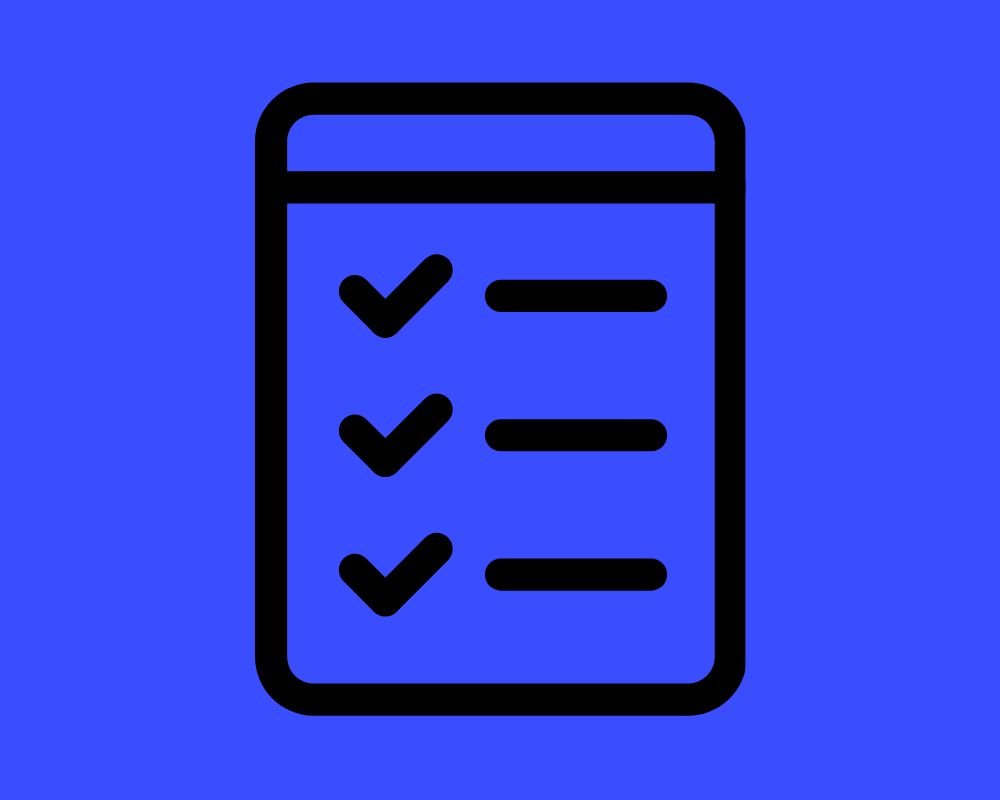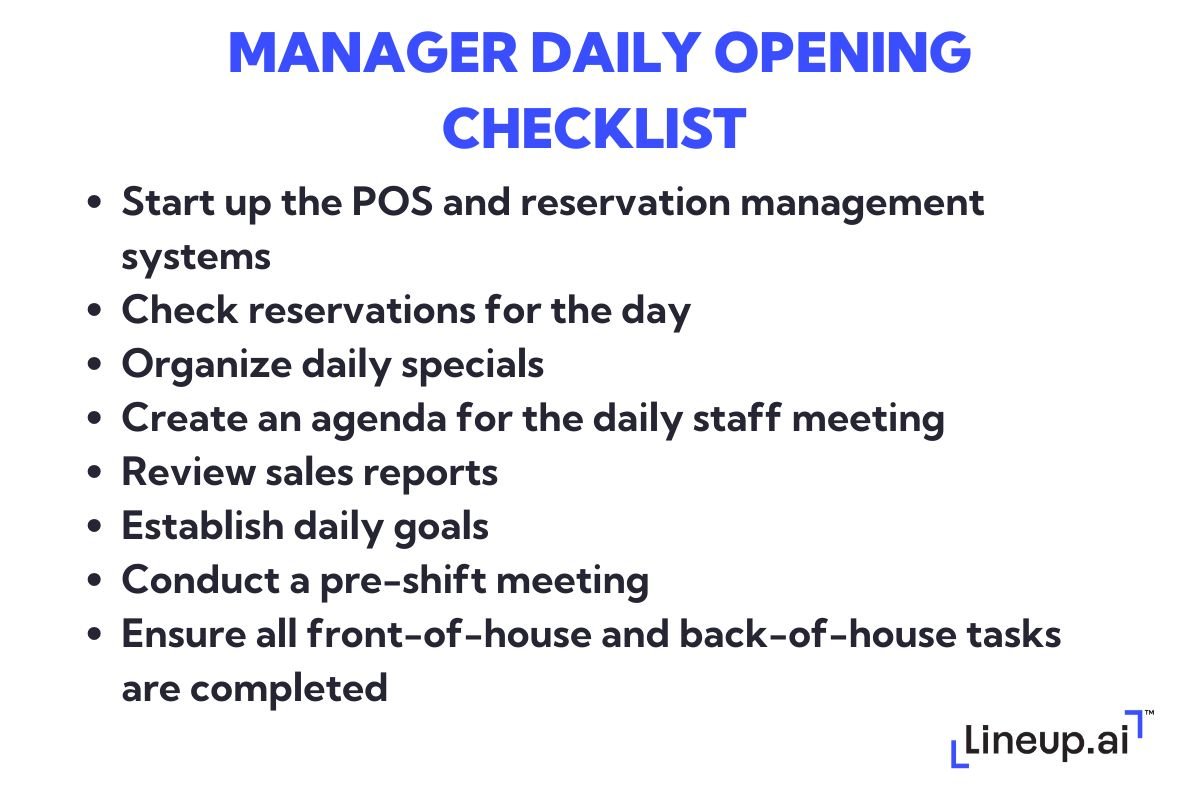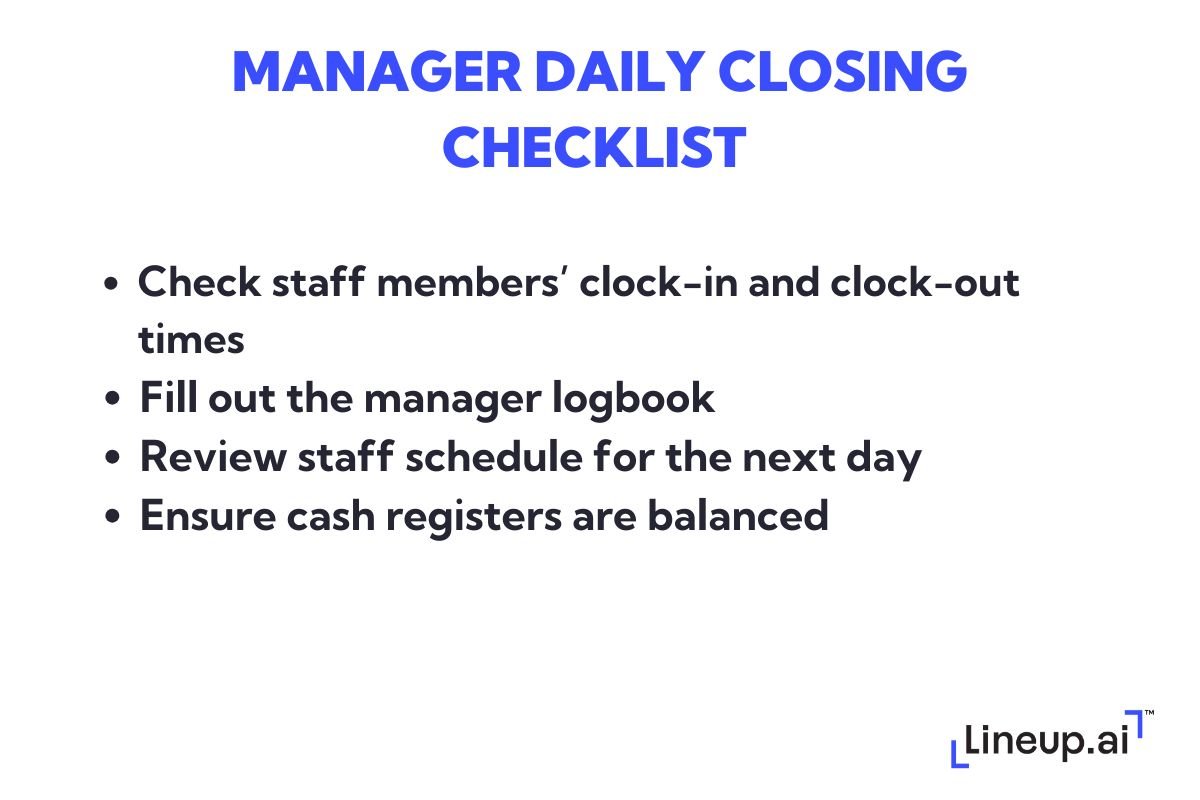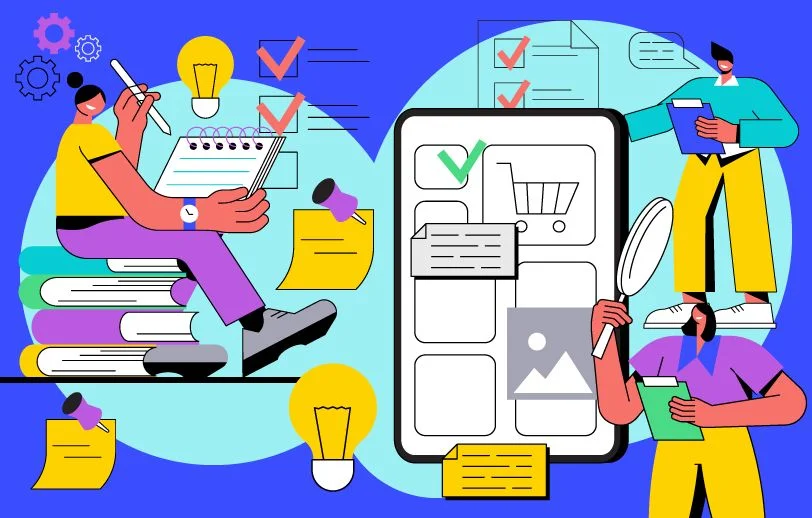Efficiently managing the daily opening and closing tasks is the backbone of a successful restaurant operation. Having comprehensive opening and closing checklists is the key to avoiding potential pitfalls when performing day-to-day operations and maximizing efficiency.
From pre-launch preparations and regulatory compliance to post-operational wrap-ups, these essential restaurant daily opening and closing checklists serve as invaluable guides for restaurateurs and owners, offering a blueprint to navigate the complexities of the restaurant industry and deliver an exceptional dining experience.
What Is a Restaurant Operations Checklist?
A restaurant's daily operations checklist is a list of tasks that the staff and managers need to complete each day, both upon opening and closing the restaurant. The checklist can be printed out on paper, or it can be a digital checklist that’s reviewed on a tablet or other device.
On a restaurant checklist template, tasks are usually grouped by staff departments into front-of-house, back-of-house, and management tasks.

Why You Need a Restaurant Operations Checklist
Every restaurant should have a detailed checklist of standard operating procedures the staff needs to complete every day. A restaurant operations checklist can help you:
- Streamline daily restaurant operations – Having a list of items staff members need to check off before opening and closing the restaurant will ensure your restaurant keeps running smoothly.
- Improve staff accountability – A restaurant checklist can also help improve your staff’s accountability by allowing you to assign a responsible staff member to each item on the checklist.
- Provide a consistent level of customer service – By giving staff members a clear list of items they should complete every day, you enable your team to provide a consistent level of customer service at all times.
- Prevent accidents in the kitchen – Safety should be a priority in every restaurant kitchen. A clear list of safety precautions that need to be made every day can prevent accidents and ensure no one gets hurt.
- Meet food safety standards – Food safety violations can be very costly. Giving your kitchen staff a list of tasks they should complete every day helps ensure compliance.
Check out our free restaurant daily opening and closing checklist for staff and restaurant managers in .pdf below.
Restaurant Opening Checklists
There’s a lot of preparation that goes into making sure a restaurant is ready to be open for customers in the morning. We wanted to help you streamline your day-to-day restaurant operations by preparing opening and closing checklists for both kitchen and front-of-house, as well as a checklist for managers.
Front-of-House Daily Opening Checklist
Opening your front-of-house area is extremely important. This is where your customers interact with your business. It's where they form their opinions that they'll pass on to friends and review sites. Making sure that your front-of-house is in order before opening will contribute to a better customer experience and ensure that things run smoothly throughout the day.
Pre-Opening Tasks
- Unlock the front door and turn on the lights
- Turn on music or other ambiance-setting features
- Check restrooms and stock with necessary supplies (toilet paper, hand soap, paper towels)
- Check tables, chairs, and floors for cleanliness
- Set up the host stand with menus, reservation book, and any necessary supplies (e.g. pens, notepads)
- Ensure trash bins are empty
Preparation for Service
- Check and set up tables for reservations and walk-ins
- Ensure adequate supplies are available (e.g. silverware, plates, glasses, napkins)
- Check all condiments, salt and pepper shakers, and other table settings
- Ensure proper lighting and temperature in the dining room
- Ensure POS system is ready for use
- Restock liquor
Staff Communication
- Communicate with the kitchen staff to ensure all orders are received and understood
- Hold pre-shift meeting to go over specials and menu changes
- Review any special requests from customers
- Check in with staff to ensure they are ready to start their shifts
Safety and Security
- Ensure emergency exits are unlocked and easily accessible
- Ensure fire extinguishers and first aid kits are easily accessible and fully stocked
- Check all door locks and security systems
Other
- Check for any issues with equipment (e.g. lighting, sound system, POS system)
- Check that signage is clearly visible and up-to-date
These are just some examples of what can be included in a FOH opening checklist. The specific items and details will depend on the unique needs and operations of each restaurant.
Kitchen Daily Opening Checklist
The most important factors when opening back-of-house are to ensure safety, cleanliness, and smooth operations. A good process will help your kitchen stay within health code regulations, move quickly during high-volume periods, and deliver consistent food quality:
Pre-Opening Tasks
- Unlock the kitchen door and turn on the lights
- Check all equipment (e.g. ovens, stovetops, fryers) to ensure they are clean and in good working condition
- Turn on all necessary equipment, such as the grill, fryer, and oven
Preparation for Service
- Check inventory levels and replenish as necessary
- Stock necessary ingredients and supplies, such as meat, vegetables, spices, and cooking oil
- Check expiration dates on all ingredients and supplies
- Ensure all necessary kitchen tools (e.g. knives, spatulas, measuring cups) are clean and available
- Set up mise en place for each station
Communication with FOH Staff
- Communicate with FOH staff to ensure they are aware of any menu changes or specials
- Review any special requests or dietary restrictions with FOH staff
Safety and Sanitation
- Check that all areas of the kitchen are clean and sanitized, including floors, walls, and surfaces
- Check that all food storage areas are organized and clean
- Ensure all necessary safety equipment is available and in good condition, such as fire extinguishers and first aid kits
- Ensure all staff members have proper personal protective equipment (PPE), such as gloves and aprons
- Check all temperatures (refrigerator, freezer, food storage, etc.) to ensure they are within safe ranges
Other
- Check for any issues with equipment (e.g. ovens, stovetops, fryers)
- Ensure all necessary supplies are on hand (e.g. parchment paper, aluminum foil, plastic wrap)
Restaurant Closing Checklists
Closing down your restaurant is just as important as opening. Leaving things in a good state for the opening crew makes everything run more smoothly throughout the day. It's also important for ensuring food quality and overall cleanliness.
Front-of-House Daily Closing Checklist
This section is designed to guide your team through a comprehensive end-of-day routine, ensuring that every aspect of your restaurant's front-of-house operations is meticulously addressed.
Closing Tasks
- Clear all tables and consolidate remaining food and beverages
- Remove all linens and clean the table tops
- Refill all condiment containers and replace any empty salt and pepper shakers
- Ensure all chairs are neatly arranged and stored
- Polish glassware
- Remove any personal belongings from the FOH area
Cash and Reporting Tasks
- Count cash and process end-of-day transactions in the POS system
- Reconcile cash and credit card receipts against sales totals
- Balance cash and credit card receipts against the POS system totals
- Prepare any necessary reports (e.g. sales reports, inventory reports)
Cleaning and Maintenance Tasks
- Sweep and mop the FOH area floors
- Clean and sanitize all FOH area surfaces, including tables, chairs, and counters
- Clean and restock restrooms with necessary supplies (e.g. toilet paper, hand soap, paper towels)
- Check and restock any FOH area supplies (e.g. pens, notepads, menus)
- Perform any necessary maintenance tasks (e.g. replace light bulbs, fix wobbly tables)
Security and Closing Tasks
- Ensure all doors and windows are locked and secured
- Turn off all FOH area lights and air conditioning
- Take out the trash
- Ensure all security systems are armed and functioning properly
Kitchen Daily Closing Checklist
Closing Tasks
- Turn off all equipment, including ovens, grills, fryers, and stovetops
- Clean and sanitize all equipment and surfaces, including cutting boards, prep tables, and cooking utensils
- Consolidate and store all remaining food and ingredients
- Ensure all kitchen tools and utensils are cleaned and stored properly
- Remove all personal belongings from the kitchen
Inventory and Stocking Tasks
- Take inventory of all remaining food and ingredients
- Label and store all leftover food and ingredients properly
- Restock necessary items for the next shift, such as meats, vegetables, and spices
- Check and restock any necessary kitchen supplies, such as foil, plastic wrap, or parchment paper
Cleaning and Maintenance Tasks
- Sweep and mop the kitchen floors
- Clean and sanitize all food storage areas, including refrigerators, freezers, and dry storage
- Clean and sanitize all dishware and utensils
- Clean and sanitize all kitchen equipment, including ovens, grills, and fryers
- Perform any necessary maintenance tasks, such as replacing light bulbs or repairing equipment
Safety and Security Tasks
- Ensure all kitchen equipment is turned off and safely cooled down
- Ensure all doors and windows are locked and secured
- Ensure all security systems are armed and functioning properly
Restaurant Management Checklists
Manager Daily Opening Checklist
The manager runs the show from day to day. Ensuring there is a consistent process in place will help everything run more smoothly. There's a lot on a manager's plate, so following a checklist is helpful to make sure nothing is forgotten:
- Start up the POS and reservation management systems
- Check reservations for the day
- Organize daily specials
- Create an agenda for the daily staff meeting
- Review sales reports
- Establish daily goals
- Conduct a pre-shift meeting
- Make sure all front-of-house and back-of-house checklist items are completed

Manager Daily Closing Checklist
The management checklist for closing a restaurant should include the following items:
- Check staff members’ clock-in and clock-out times
- Fill out the manager logbook
- Review staff schedule for the next day
- Ensure cash registers are balanced

How To Implement a Restaurant Operations Checklist
So, how do you actually create a restaurant daily tasks checklist? Follow these steps:
- Brainstorm tasks — Think about all the tasks you need to include in the checklist. Involve your team in the process to make sure you don’t forget any important tasks.
- Write down checklist items – Create checklist items based on the tasks identified in the previous step. Separate items into three categories: front-of-house, back-of-house, and management tasks.
- Assign a staff member to each checklist item – Make sure every item on your checklist has a staff member responsible for it.
- Choose a format for your checklist – Do you want to use a paper checklist or a digital one? Both of these have their pros and cons. For example, a paper checklist is harder to update (because you need to print a new one every time you add or remove tasks), but a digital one might require you to invest in tablets or other devices for all the restaurant staff members responsible for the checklist.
- Review and update your checklist regularly – Remember that creating a restaurant operations checklist isn’t a one-and-done thing. You should review and update your checklist regularly, adding or removing items as necessary.
Use Restaurant Operations Checklists To Keep Your Restaurant Running Smoothly
Having a restaurant operations checklist is crucial for streamlining restaurant opening and closing procedures, as well as providing a consistent level of service to your customers.
Use the checklist we outlined above to keep your restaurant business running smoothly at all times. Finally, make sure to review and revise the checklist regularly to keep it up-to-date.
Further read:

Boris Mustapic is a content marketer with a decade of experience in the digital marketing industry. He specializes in helping B2B SaaS companies drive growth through strategic, product-led content marketing.
More about the author